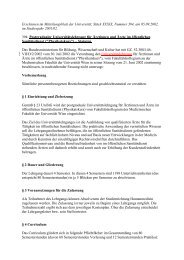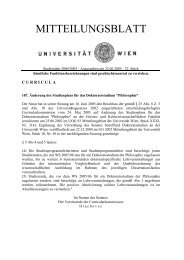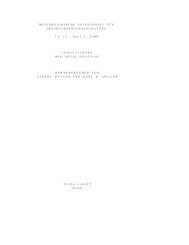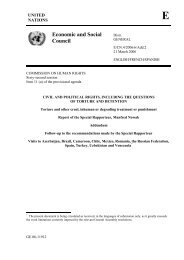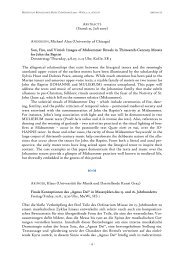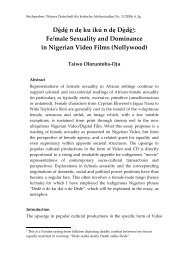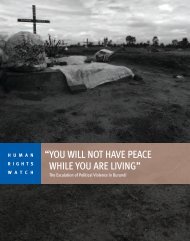INDONESIA EXECUTIVE SUMMARY Indonesia is a multiparty ...
INDONESIA EXECUTIVE SUMMARY Indonesia is a multiparty ...
INDONESIA EXECUTIVE SUMMARY Indonesia is a multiparty ...
Create successful ePaper yourself
Turn your PDF publications into a flip-book with our unique Google optimized e-Paper software.
<strong>INDONESIA</strong> 39<br />
The government did not enforce minimum age laws effectively, and furthermore<br />
did not act effectively to eliminate forced child labor. Despite leg<strong>is</strong>lative and<br />
regulatory measures, most children who worked, including as domestic workers,<br />
did so in unregulated environments. Anecdotal evidence suggested that local labor<br />
officials did not investigate the workplaces of child domestic workers and carried<br />
out few child labor investigations in factories.<br />
An estimated six to eight million children exceeded the legal three-hour-daily work<br />
limit, working in agriculture, street vending, mining, clothing manufacture, and<br />
other areas. A 2009 survey from by the International Labor Organization and the<br />
National Stat<strong>is</strong>tics Agency reported that about four million working children age<br />
10 to 17 are considered employed in wage work by the standard definition.<br />
Children worked in agriculture primarily on palm oil, tobacco, rubber, and tea<br />
plantations. Children also worked in f<strong>is</strong>heries, manufacturing (such as cottage<br />
factory footwear production, textiles, and cigarette production), logging, toy<br />
making, food processing (e.g., bird-nest gathering), and in the small-scale mining<br />
sector. Other children work in the informal sector selling newspapers, shining<br />
shoes, street vending, scavenging, and working with their parents in family<br />
businesses or cottage industries.<br />
A significant number of children worked against their will in prostitution;<br />
pornography; begging; drug sale, production, and trafficking; domestic service;<br />
and other exploitive situations, including a small number on f<strong>is</strong>hing platforms.<br />
A domestic worker advocacy group estimated that there were four million<br />
domestic workers in the country, of whom at least 1.3 million were under age 18.<br />
Many domestic workers were not allowed to study and were forced to work long<br />
hours, received low pay, and generally were unaware of their rights. Child<br />
domestic work <strong>is</strong> considered one of the worst forms of child labor, as it often<br />
renders children vulnerable to sexual, physical, or psychological abuse.<br />
Also see the Department of Labor’s Findings on the Worst Forms of Child Labor<br />
at www.dol.gov/ilab/programs/ocft/tda.htm.<br />
d. Acceptable Conditions of Work<br />
The minimum wage levels set by most local governments did not provide a worker<br />
and family with a decent standard of living. Most province-level minimum wage<br />
rates fell below the government’s own calculation of basic minimum needs.<br />
Country Reports on Human Rights Practices for 2011<br />
United States Department of State • Bureau of Democracy, Human Rights and Labor




